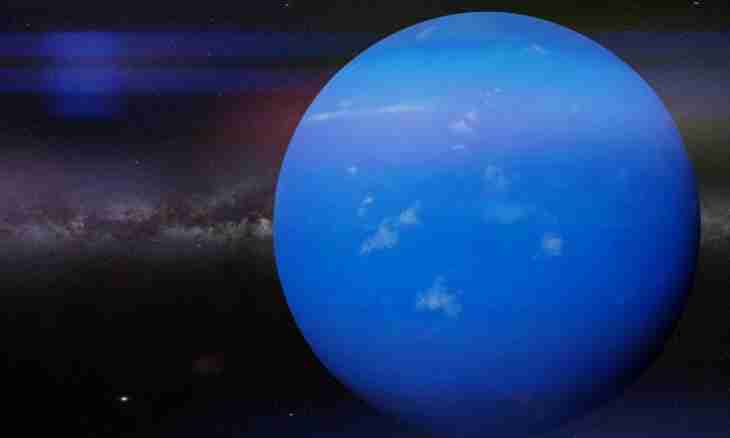Planets are the most considerable objects of near space after the Sun. The solar system has 8 main planets, five objects recognized as dwarf planets and uncountable quantity of asteroids. So what place in this hierarchy is taken by the Neptune and what he is interesting by?
So, around the Sun, planets rotate: Mercury, Venus, Earth, Mars, Jupiter, Saturn, Uranium, Neptune. In such order they are located concerning the Sun - the central object of near space. Thus, the Neptune – the eighth and latest planet of the Solar system.
As the eighth planet was discovered
Interesting how the planet the Neptune was discovered. It is the first planet which existence was predicted on the basis of mathematical calculations. Its opening became triumph of settlement astronomy. The Neptune is invisible with the naked eye. Visual detection and observation of the eighth planet became possible only after the invention of the telescope. There are certificates that some scientists observed the Neptune even before official opening, but mistakenly took it for a fixed star.
After at the end of the 18th century Gershel discovered Uranium – the seventh planet of the Solar system which with great difficulty can be made out without telescope, - scientists found out that its movement on an orbit differs from theoretically calculated a little. Independently of each other Frenchman Leverye and Englishman Adams drew a conclusion and suggested that behind an orbit of Uranium there is one more massive celestial body which gravitational field distorts an orbit of the seventh planet. Almost at the same time both scientists calculated the mass of the unknown planet and the place of its stay. On September 23, 1846 astronomers of Halle and D'Arre for the first time observed the Neptune almost in that place where it was predicted by Leverye and Adams.
Giant planet
The Neptune settles down at distance of 4503 000 000 km from the Sun and does one turn around it in 164.8 terrestrial years. The first 4 the closest to the Sun – Mercury, Venus, Earth, Mars - planets of terrestrial type. The Neptune treats the second group. It one of 4 giant planets. Its diameter by 4 times exceeds diameter of Earth, and it more than by 17 times massivny it. The Neptune – twilight giant. He receives 900 times less sunlight, than Earth. It is no wonder that temperature of the planet is -214 °C. However scientists consider that at such distance from the Sun temperature has to be even lower. It is supposed that the Neptune has an internal source of heat which nature is still unknown. In any case, the planet radiates energy in space, and is twice more, than receives from the Sun. As well as all giant planets, the Neptune quickly rotates round its pivot-center. Its day lasts a little more than 16 hours. The axis of the planet is inclined on 29.8 ° concerning the plane of its orbit. It means that on the Neptune there is a change of seasons. However its astronomical year is so big that if to divide it into seasons by analogy with terrestrial, duration of one season will exceed 40 terrestrial years. As well as all giant planets, the Neptune has the extensive atmosphere. Hydrogen, helium, methane and also molecular nitrogen and small percent of the impurity derivative of methane – acetylene, ethylene, ethane, diacetylene, carbon monoxide are its part. The Neptune has 13 natural satellites. To the biggest of them - the Triton - does one turn around the Neptune in 6 days, the most remote - in 25 terrestrial years.

